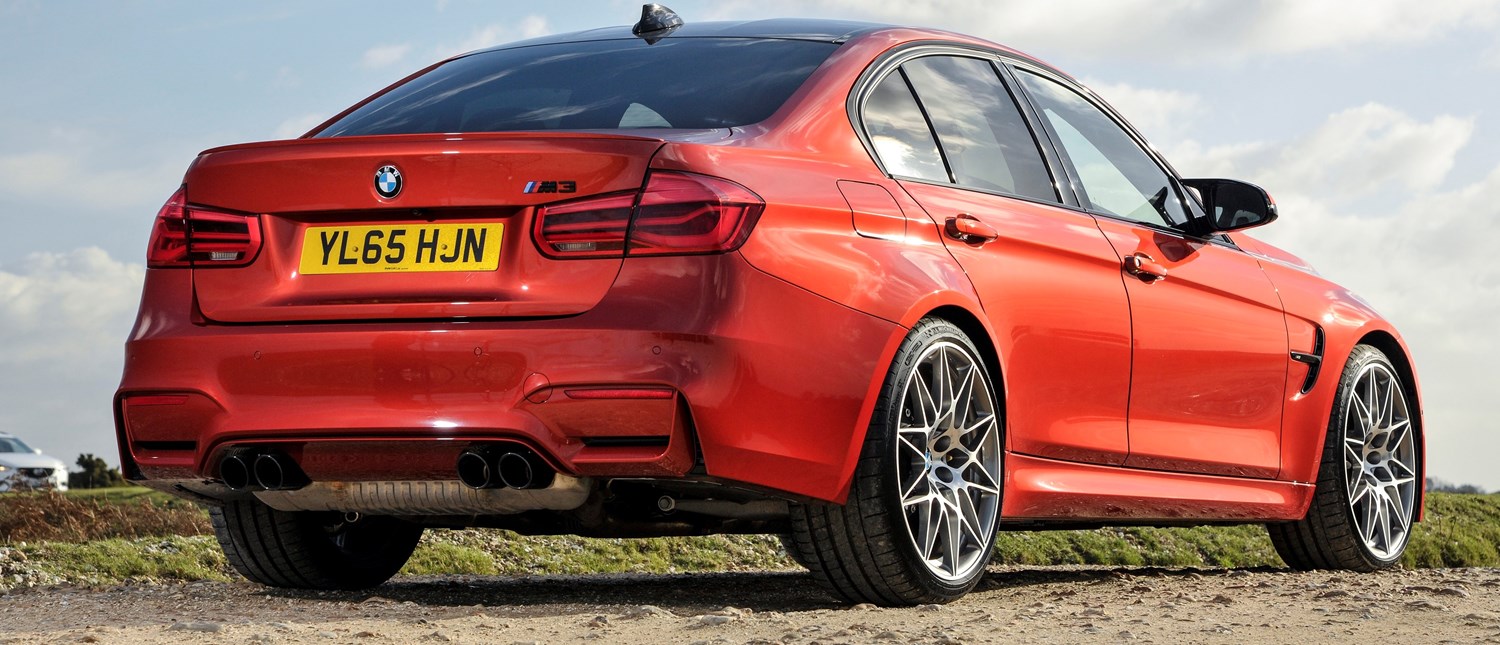Latest Model
As the standard models are so similar, both the M3 and M4 share the same chassis, mechanical setup and wheelbase, with the main differences being the M3 is slightly heavier, taller and isn’t as streamlined.
Released three years after the standard 3 Series in 2014, the M3 does look much more aggressive with the sporty M-specific bodykit and you can tell from how it looks that it can handle itself on the road and on the track if needed. The M3 received a mid-life restyle in 2017.
Fitted with a turbocharged, 3.0-litre straight-six petrol engine producing 425bhp, the M3 gets up to 60mph in just over four seconds and goes on to a limited top speed of 155mph. The Competition Pack adds a further 19bhp and even more assertive performance.
Something you may want from a day-to-day saloon is economy, but don’t expect that from the M3 as despite being turbocharged to offer the same performance as the previous V8 model the fuel consumption is about the same, so the M3 is definitely not going to save you money compared to the older model.
Value for money
As a sporty saloon, prices are inflated from the get-go and the £57,905 starting price is what you would expect when compared to its closest rivals like the Mercedes-AMG C63 and Alfa Romeo Giulia Quadrifoglio. However, between the facelifted model and the original fifth generation you won’t find much difference in spec and overall performance, so it could be worth your while looking for a pre-owned model.
The current model comes with an M body styling kit, active M differential and adaptive M suspension, drive manager, M-specific front and rear seats and BMW ConnectedDrive services.
Despite the sporty nature, it is still a capable everyday car and comes with all mod-cons like automatic air-conditioning, satellite navigation, heated front seats, Bluetooth with wireless charging dock and Wi-Fi hotspot, electric windows and parking sensors with on-screen display.
Used models can sometimes be even more expensive than a new model due to their pedigree, condition and the extras added. But with some of the latest generation’s models coming in cheaper – despite little difference between the two versions – you can find some bargains.
One example with only 4,000 miles on the clock comes with plenty of extra kit to enhance the overall experience, but is priced at £54,949 – almost £3,000 cheaper than a new model. Fitted with rear and side view cameras, adaptive LED headlights, carbon fibre trim, head-up display, high beam assist and rear sun blinds. With those extra accessories, you also get the DCT automatic gearbox, which in a new model adds £2,495 to the OTR price.
Looks and image
Despite looking more aggressive than a normal 3 Series, the M3 isn’t the best sports car on the market and with the kidney grille and rather standard saloon silhouette that isn’t going to change. But relatively speaking it does look sporty with the flared wheel arches, accentuated bonnet lines and added fins on the front bumper and rear end.
The interior outlook is actually quite underwhelming considering the car’s performance and it looks like most other BMWs. Despite the M designation throughout and carbon fibre detailing in some circumstances, it looks plain and very safe. That being said, everything is where it should be, is well made and is of a high quality – something that you should expect from a £50-grand sports saloon.
But what you really buy the M3 for is how it drives and when pushed it has spades of character and excitement that can be difficult to match. After going on a rather drastic diet since the previous version, the fifth generation has lost around 80kg compared to its predecessor and along with improved electronic aids you can really tell the difference through the corners. It is agile, well-balanced and can stay very stable through the corners – even if a bit of understeer does kick in if you push slightly too hard.
Body roll is also pretty limited and it just goes away if you tauten the suspension right up in sport and sport plus damper settings. Comfort works very well for everyday driving – where you will be mostly in the M3 – and that can even reveal some performance if you go for it on twisty roads.
Directional and road feel is pretty good through the steering wheel and you get enough feedback to know where to pick up the throttle or where you’re struggling for grip.
Over bumps and undulating surfaces, the rear axle can feel slightly unsettled at times and only gets in the groove on a smoother surface, but the front set can really counteract that with lots of sticking power and great turn-in feel.
Surprisingly the optional Competition Pack can further improve the ride comfort as well as – unsurprisingly – furthering the dynamic feel. The adaptive suspension offers much more comfort and can cruise very capably with the settings most certainly in ‘Comfort’.
It can be said the ride is on the firm said, but not enough to turn you away from the M3. The 19-inch can send some shakes and jitters through into the cabin, but what do you expect? It’s a sports saloon after all.





